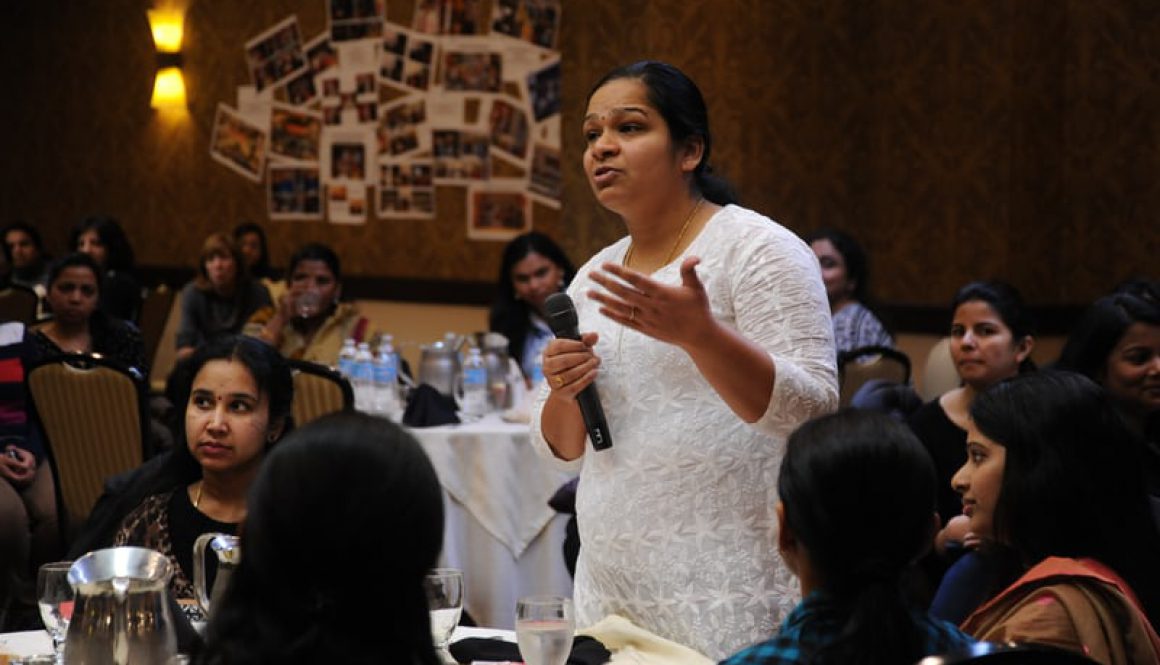 This year, I had privilege of participating in the first cohort of Association’s North Diversity & Inclusion Leadership program. As I applied and checked off the requirements for the application just a year before, I did not expect how much it would impact my career, network and skills.
This year, I had privilege of participating in the first cohort of Association’s North Diversity & Inclusion Leadership program. As I applied and checked off the requirements for the application just a year before, I did not expect how much it would impact my career, network and skills.
Each quarter, our cohort met for either a half day or full day for leadership training that revolved around a certain skill. This included communicating, presenting and writing, executive presence and conflict. With a cohort of six, each session pulled you out of your comfort zone — you had to participate throughout. This made the experience much more engaging compared to a classroom style lecture with a bigger group. The content and exercises were really valuable, including a DiSC behavioral profile assessment and presenting in front of your cohort with feedback on your skills. What really made the program valuable was the people. From the first day, our cohort became close and started engaging in the content and discussed how it pertained to challenges we have faced in our professional lives. Knowing our diverse group all have a diverse background and stories to tell, it became easy to open up and gain advice from our peers.
This program has not only given me insight on how to implement my leadership skills to the associations I work with, but it also taught me how to incorporate more diversity and inclusion initiatives within association strategic goals. There is not a standard for an association when it comes to diversity and inclusion and every association has a variety of policies and practices it implements. What is known from current research is organizations that are more diverse and inclusive are more profitable and valuable (https://www.mckinsey.com/business-functions/organization/our-insights/delivering-through-diversity).
According to the American Society of Association Executives (ASAE) Foundation, diversity and inclusion within associations can benefit the organization financially, help generate ideas and give the organization authenticity and an advantage compared to other organizations (Enhancing Diversity and Inclusion in Membership Organizations, page 9). These benefits will only occur if the diversity and inclusion strategy is managed and effectively actionable. This can be achieved in a variety of ways — whether by a detailed plan, assignments to staff and volunteers, task forces, committees or a combination. The terms “diversity” and “inclusion” are very broad, so organizations must narrow their targeted outcomes – what are some communities that the organization would like to have participate or think would benefit? Does your board represent your member base? How can the association open its door to more communities or partner with other organizations for mutual benefit? Diversity and Inclusion has multiple layers within an organization — board and volunteers, staff, member base, workforce and more.
When associations talk about diversity and inclusion, there is usually an emphasis on diversity more than inclusion (Enhancing Diversity and Inclusion in Membership Organizations, page 15). It is beneficial to look at both diversity and inclusion when determining these goals and to not assume one means the other. They go hand in hand, but increasing a certain area does not mean all may feel included in the organization. It is no surprise that each field is different in its diversity – age, gender, location, etc. — so the organization must look at not only its members, but the field to determine what to focus on. A common way associations can expand their community is looking at schools or educational programs that train in the profession and partnering with them; this can be determining a student rate for membership or event attendance to expose the community to the organization, creating a student competition, or teaming up with schools to host events. It is also important to think about the organization’s target workforce and look to improve the field along with the organization. A common misconception is because the field is not diverse, the organization does not have to be diverse; but there are ways the association can help diversify its workforce.
It is important to understand that being a truly diverse and including association is not a one-size-fits-all scenario. Each organization must look at its field and determine its priorities. Diversity and inclusion initiatives are also never “one and done.” It is critical to consistently analyze the programs and reevaluate if needed. There is a lot to unpack with the terms diversity and inclusion when it comes to organizations — but be sure to incorporate the values of the organization, define the needs of the community, and then put words into actions and priorities of the association. As D&I initiatives become a more frequent conversation in the association world, a forward-thinking organization looks toward embracing inclusivity and heterogeneity to truly thrive in the future.
Sources: ASAE Foundation – Enhancing Diversity and Inclusion in Membership Associations https://foundation.asaecenter.org/research/diversity-and-inclusion.
2018 McKinsey Report – Delivering through diversity https://www.mckinsey.com/business-functions/organization/our-insights/delivering-through-diversity





 This year, I had privilege of participating in the first cohort of Association’s North Diversity & Inclusion Leadership program. As I applied and checked off the requirements for the application just a year before, I did not expect how much it would impact my career, network and skills.
This year, I had privilege of participating in the first cohort of Association’s North Diversity & Inclusion Leadership program. As I applied and checked off the requirements for the application just a year before, I did not expect how much it would impact my career, network and skills.



